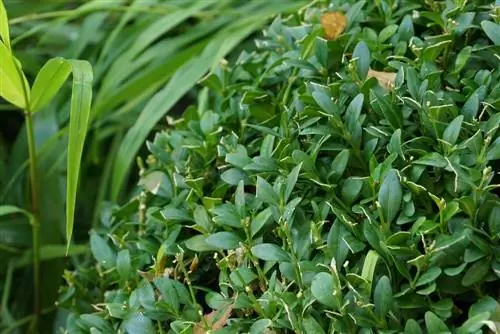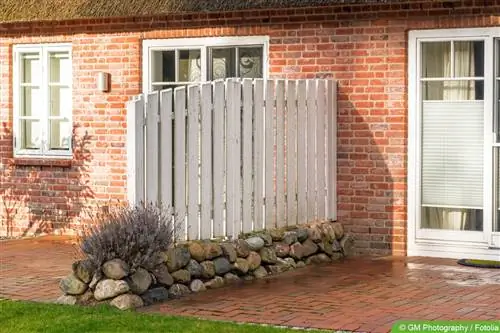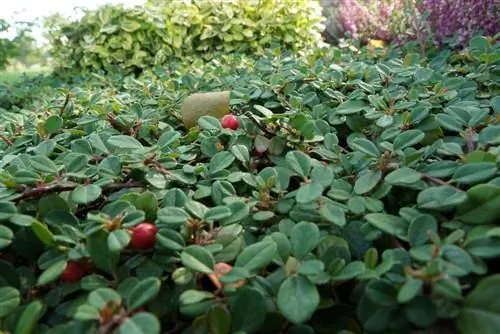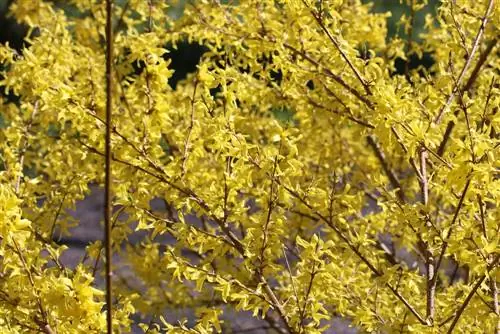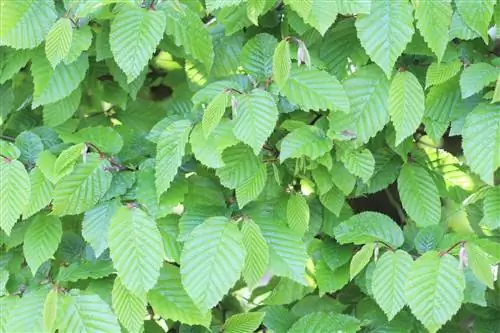- Author admin [email protected].
- Public 2023-12-17 03:39.
- Last modified 2025-06-01 06:48.
In order for a hedge in the garden to remain dense and green, it is necessary to choose the right plants for it. In addition to the basic requirements for winter hardiness and year-round green foliage, it is also important that the shrubs tolerate pruning well and grow more or less quickly as required.
Terms hardiness and evergreen
Plants that do not shed their leaves over a large area in autumn or at other times of the year are called evergreen. The renewal of the foliage takes place in an ongoing, barely noticeable process, so that there is constantly old and new foliage on the plant during the growing season. In comparison, wintergreen plants completely renew their foliage in spring, so they are bare for some time. Plants that are hardy also cope well with deep frost. The structure of the leaves, stems and, above all, plant juices allows them to survive the winter without damage. While frost hardiness refers to plants in their natural environment, winter hardiness also characterizes imported garden plants.
Cherry laurel (Prunus laurocerasus)
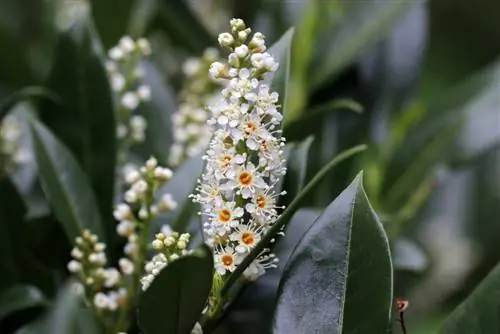
This shrub originally comes from Asia Minor, but is now so well adapted to our climate that it is not only hardy, but if not cared for, it will also self-seed and can therefore develop into a real weed. However, if hedges are trimmed regularly, this risk is low. The plants are particularly suitable for larger hedges as they can reach a height of up to 4 m. The evergreen leaves are reminiscent of laurel, the small stone fruits are reminiscent of cherries, which explains the name. Some parts of the plant are poisonous.
Requirements and care
- Soil condition: all normal garden soils suitable, no special requirements
- Watering: in dry summers and winters
- Fertilizing: in spring with new growth with compost
- Cut: easy to cut, in spring
- Diseases: Fungal infestation possible, possibly treat with fungicide
- Planting spacing: depending on the variety and size, 1 - 3 plants per meter
Occidental tree of life (Thuja occidentalis)
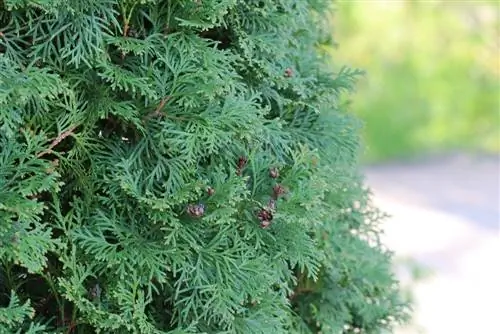
The wild form of this cypress species is native to North America, where as a tree it can reach heights of up to 20 m. Cultivated forms for gardens remain significantly lower, so they can also be planted as hedges. The evergreen foliage makes them opaque. The plant is poisonous due to the essential oils it contains.
Requirements and care
- Soil properties: moist preferred, dry tolerated, calcareous, sandy loam soil
- Location: sunny to partially shaded
- Watering: keep moist in the first few years, later in very dry conditions, mulch makes sense
- Fertilize: in spring with compost
- Pruning: necessary regularly for dense hedges, June and August, avoid excessive pruning
- Diseases: especially fungal diseases, possibly treat with fungicide
- Planting spacing: between 2 and 3 plants per meter
Yew (Taxus baccata)

This native conifer is very popular as a hedge plant because it is not only evergreen and hardy, but also very long-lived. The wild species is also most often used in gardens because it is robust and inexpensive. The yew can be used both for low enclosures and for larger hedges, using more or less vigorous plants. Be careful with children in the household, yew trees are highly poisonous and their red fruits can be tempting to eat.
Requirements and care
- Soil texture: loamy, nutrient-rich, calcareous, not too dry
- Location: shady or sunny, no special requirements
- Watering: especially in the year of planting, do not let the soil dry out, later when it is dry
- Fertilize: directly when planting and later in spring with compost
- Pruning: slow growing, regular pruning once a year in spring for dense growth
- Diseases: hardly susceptible, possibly fungal infection
- Planting spacing: slow-growing up to 5 plants per meter, strong-growing 3 plants
Cypress (Chamaecyparis lawsoniana)
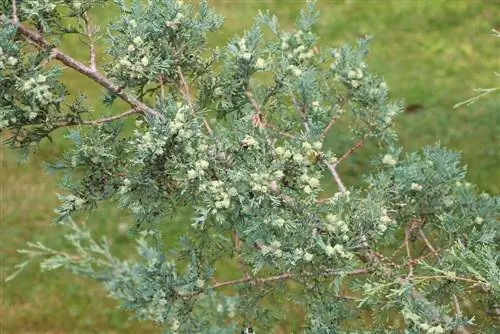
Similar to the tree of life, the wild forms of the false cypress come from North America or Asia. Most species grow as pyramid-shaped trees or, more rarely, as shrubs. As a free tree it can reach a height of up to 55 m. All parts of the plant are poisonous, consumption leads to nausea and vomiting, this also applies to pets. The conifer grows very well in the garden and has a dense, opaque growth if pruned appropriately.
Requirements and care
- Soil texture: slightly acidic, moist without waterlogging
- Location: sunny preferred, with too much shade stunted growth and baldness
- Watering: keep freshly planted moist, later only in very dry conditions
- Fertilizing: in spring and autumn
- Pruning: in spring, do not cut back into the old wood, otherwise new growth will be missing
- Diseases: Treat fungal diseases with fungicide, cut back pests
- Planting distance: between 30 to 50 cm distance between the plants
Evergreen holly (Ilex aquifolium)
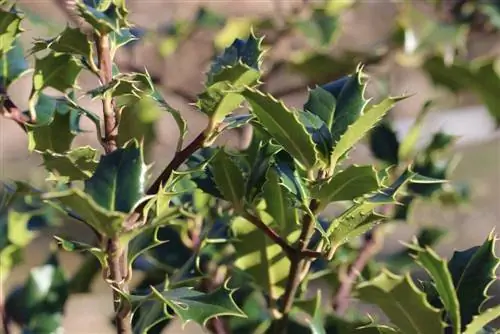
The holly is mainly known as a Christmas decoration. Because the berries are very noticeable in winter with their bright red, they are also called winter berries. The dark green leaves, which have a leathery shine and thorny teeth on the sides, are characteristic. The holly is widespread worldwide and is also native to our latitudes. Therefore, winter hardiness is not a problem for them. As with the yew tree, caution is advised with children. The plant is poisonous, including the berries. As a free tree, the holly can grow to be several meters high, but it is equally suitable as a small hedge plant.
Requirements and care
- Soil quality: moist, nutrient-rich, slightly acidic, no calcareous clay soil
- Location: bright, but not full sun, shade is tolerated
- Watering: only in very dry conditions
- Fertilize: in spring with leaf compost or rhododendron fertilizer, bark mulch is useful
- Pruning: compatible with cutting into old wood, early spring or early summer
- Diseases: often Ilex leaf miner, dispose of affected leaves and shoots
- Planting spacing: depending on the type and size, 2 to 6 plants per meter
- Winter protection: protect sensitive varieties with fleece
Privet (Ligustrum vulgare)
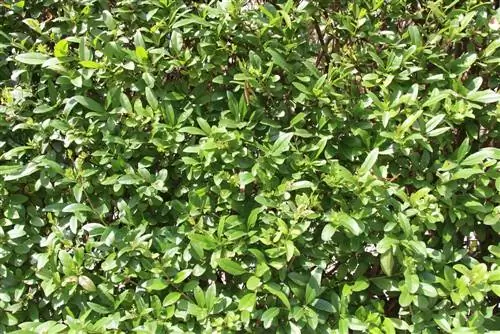
The privet family has both deciduous and evergreen varieties. The common privet is native to Europe and is known by many different names. These include rain willow and dogwood. In mild winters, the old leaves are gradually shed in spring as new growth emerges. In harsher winters, the leaves may drop earlier. Leaves and fruits of the plant are poisonous. Even contact with the plant sap when pruning can cause irritation to the skin.
Tip:
Privet is well suited for natural hedges as it is a popular place for birds and insects.
Requirements and care
- Soil texture: dry to moderately moist, sandy to loamy
- Location: sunny preferred, shady tolerated
- Watering: tolerates drought, can withstand longer periods without water
- Fertilizing: when planting and in spring with compost, mulching is useful
- Pruning: with strong growth twice a year, early summer and at the end of August, rejuvenation pruning into the old wood is possible
- Diseases: quite robust, fungal diseases or pests possible
- Planting spacing: 4 to 5 plants per meter
Boxwood (Buxus sempervirens)
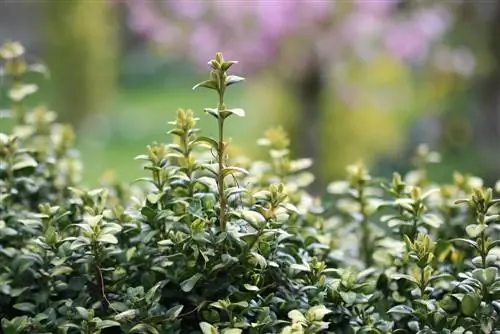
The common boxwood is native to Central Europe. However, there are other types of boxwood around the world, especially in the northern hemisphere. When growing freely, the common boxwood can grow up to 6 m tall. The plant is characterized by its dense branching and good pruning tolerance. Boxwood can be cut into any shape imaginable and is cut back one to five times a year. All parts of the boxwood are also poisonous.
Requirements and care
- Soil quality: permeable, no waterlogging, otherwise undemanding
- Location: protected, not full sun, shade preferred
- Watering: tolerates greater drought, but watering makes sense
- Fertilize: in spring compost or special boxwood fertilizer
- Cut: very compatible with cutting, the more often it is cut, the denser it grows
- Diseases: Fungal diseases and boxwood borers lead to shoot death
- Planting spacing: 10 per meter for small hedges, 5 to 6 for large ones
- Winter protection: protect from strong sunlight
Cotoneaster (Photinia x fraseri)
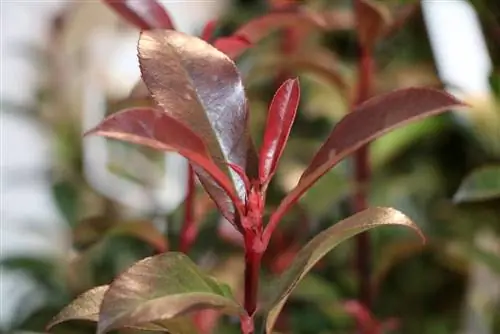
This evergreen tree belongs to the rose family. Most species are native to North America or South or East Asia. The bronze-red leaf shoots are particularly attractive. The shrub can reach a height of up to 3 m. Cultivars remain somewhat lower. With age, the loquat increases in width, especially. The red fruits, which are formed in autumn, are often eaten by birds. In humans, eating the berries can cause symptoms of poisoning, even if other parts of the plant do not contain poison. Particular caution is advised with children.
Requirements and care
- Soil quality: nutrient-rich, moderately dry, permeable, no waterlogging
- Location: sheltered, sunny to partially shaded
- Watering: regularly in the beginning
- Fertilize: in spring with compost
- Pruning: after flowering in spring
- Diseases: Fungal diseases or pest infestations possible, can be eliminated by pruning
- Planting spacing: 2 to 3 plants per meter
- Winter protection: some frost-sensitive varieties
Tip:
The variety 'Robusta' tolerates frost best.

